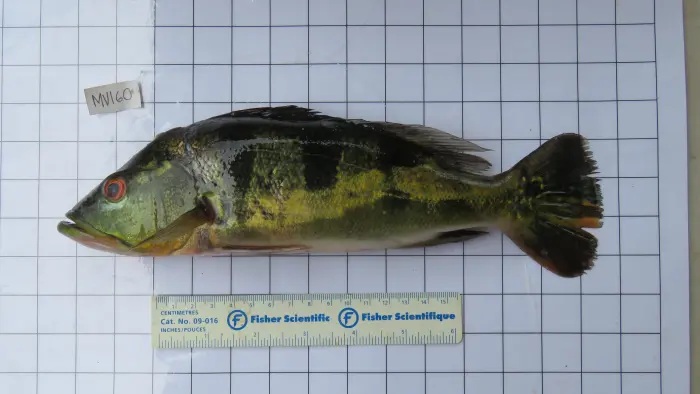Worrying Levels of Mercury Detected in Fish for Human Consumption in Panama
A study by Marisol Valverde, STRI and McGill University found worrying levels of mercury in freshwater fish in Panama.

A recent study led by the Smithsonian Tropical Research Institute (STRI) and McGill University revealed, for the first time, the presence of significant concentrations of mercury in two species of freshwater fish consumed in Panama: The Sergeant (Cichla Monoculus) and The Silverside (Hoplias Microlepis). The analysis, published in the journal Ecotoxicology, was conducted in Gatun and Bayano lakes, the two largest in the country. In Gatun Lake, 55% of the silversides tested and 21% of the whitebait tested exceeded the U.S. Environmental Protection Agency’s (EPA) safety limit of 300 nanograms of mercury per gram of tissue. Mercury is a toxic metal that can affect human health, especially through frequent consumption of contaminated fish. Based on their results, the researchers suggest safe consumption limits for adults and children.

The Sergeant (Cichla Monoculus) Gatun Lake
For example, an adult could consume a serving of Gatun Lake sergeant once a week, but should only eat dogfish from the same lake once every two weeks. Marisol Valverde, lead author of the study and a STRI fellow, emphasized that this type of research is essential to fulfilling the commitments of the Minamata Convention on Mercury, an international agreement that seeks to reduce pollution from this metal globally. In addition, the scientists warned that mercury tends to accumulate more in larger fish and noted the need for further studies to identify sources of contamination and to analyze other fish species in the lakes studied. The STRI reaffirmed its commitment to scientific research and the conservation of tropical ecosystems, highlighting the importance of these findings for public health and food security policymaking in Panama.

Silverside (Hoplias Microlepis) Lake Bayano





